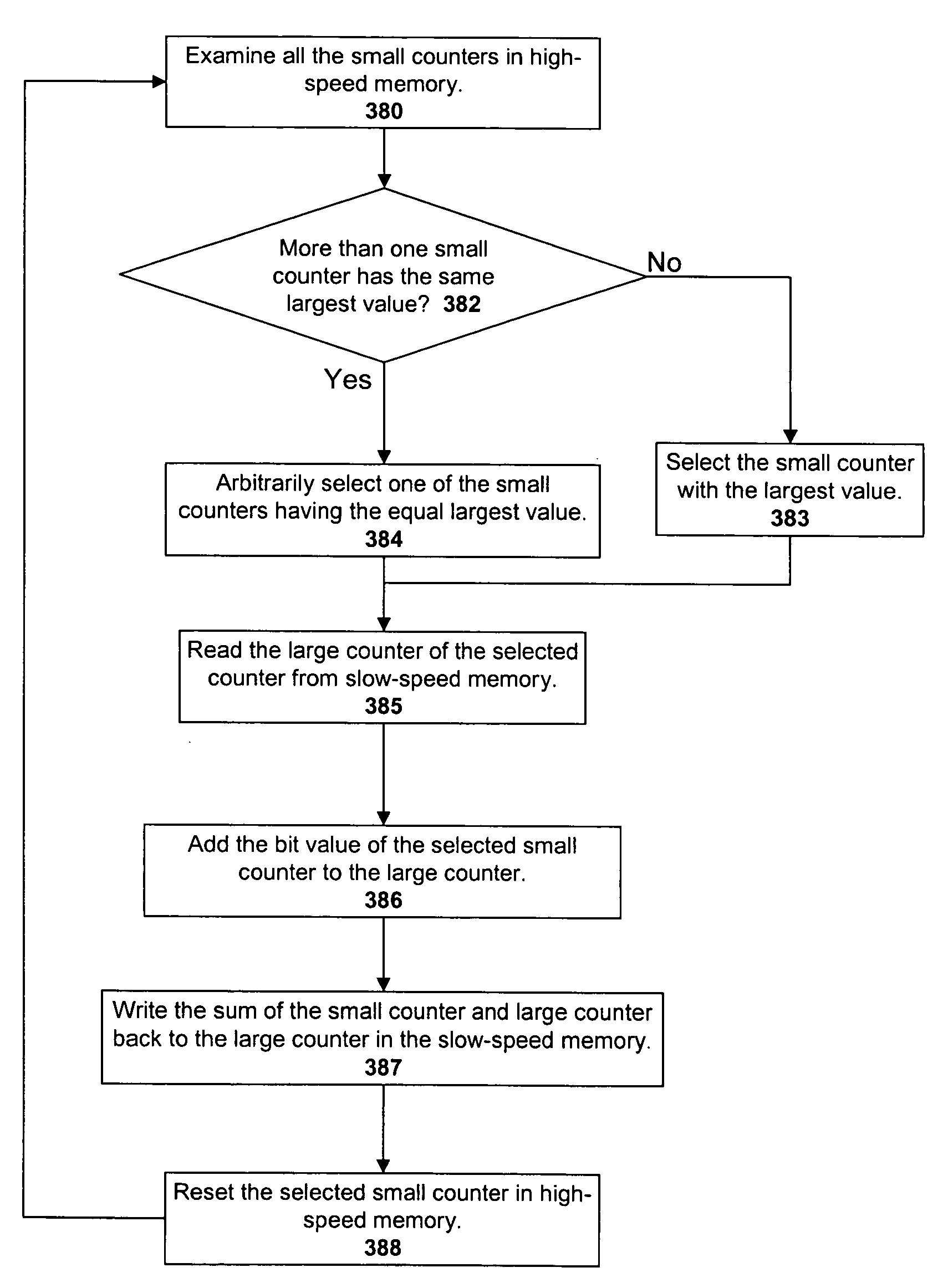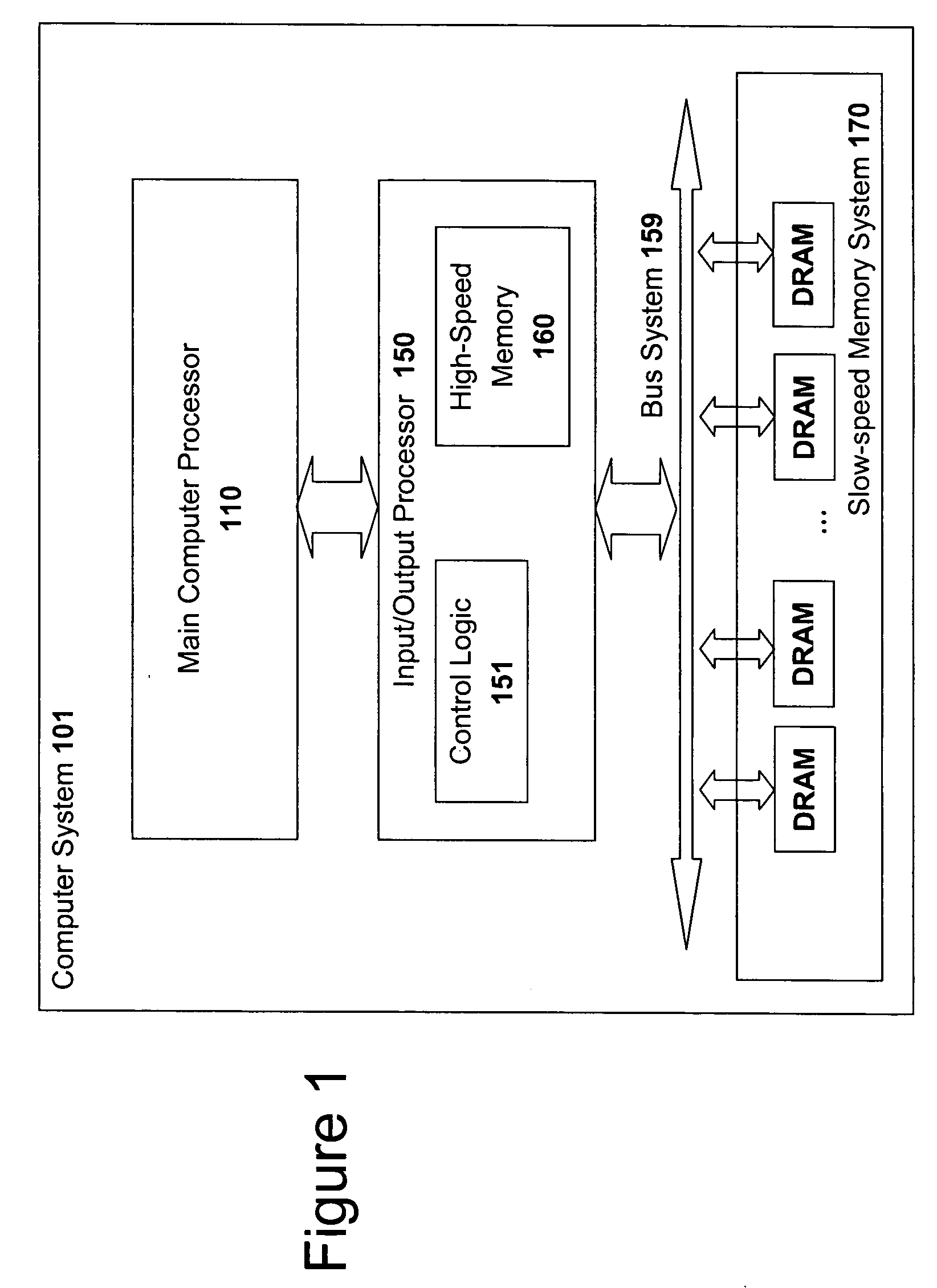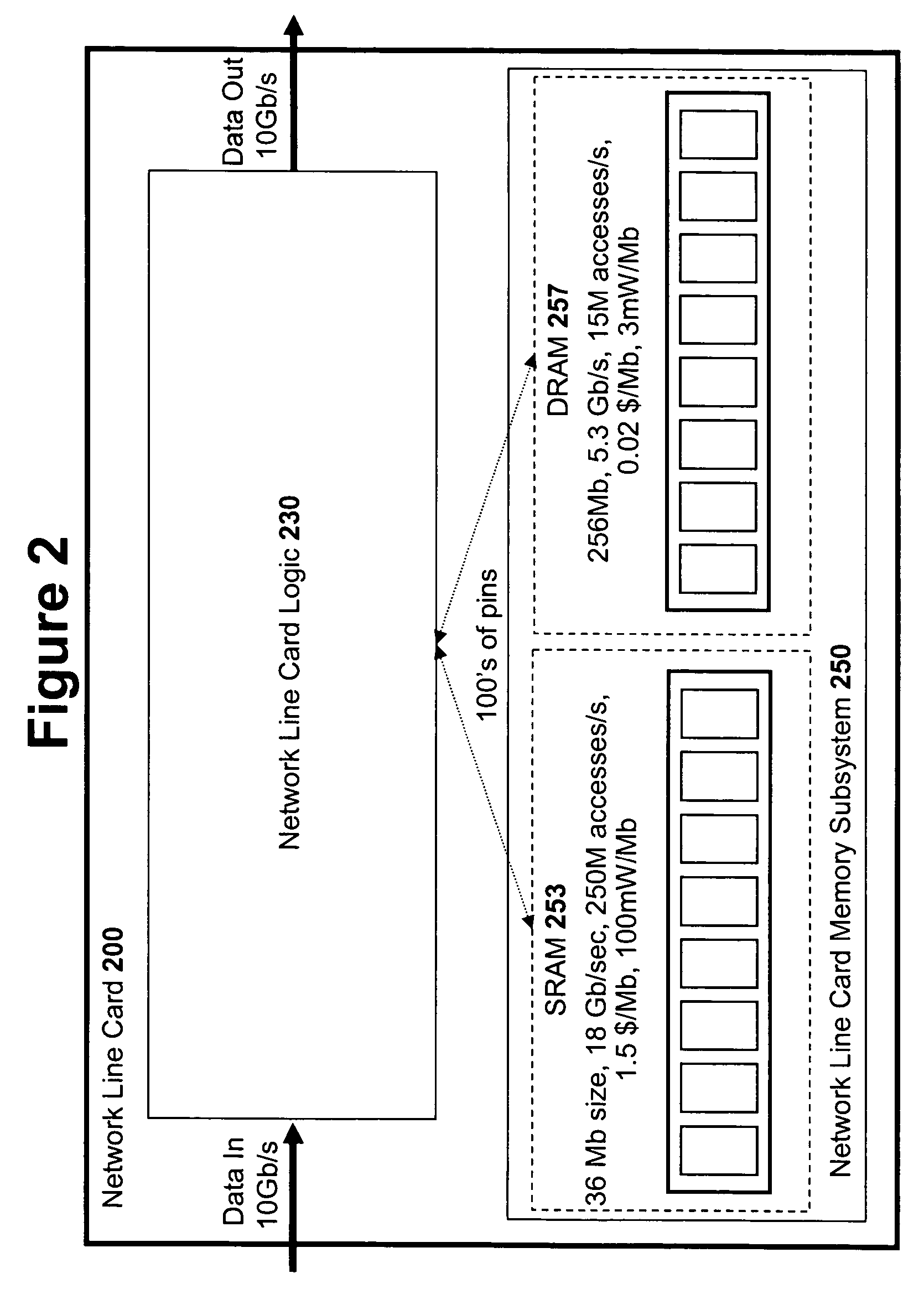High speed memory control and I/O processor system
a memory control and high-speed technology, applied in the field of memory control subsystems, can solve the problems of large amount of expensive low density memory technology, large amount of power consumption, and inability to efficiently handle certain memory access patterns, etc., to achieve efficient handling, efficient handling, and efficient handling
- Summary
- Abstract
- Description
- Claims
- Application Information
AI Technical Summary
Benefits of technology
Problems solved by technology
Method used
Image
Examples
first embodiment
[0285] In the first embodiment, the hybrid memory system stores the first N bytes of each packet in high-speed memory 360. (If there are less than N bytes in the packet then the hybrid memory stores the entire packet in the high-speed memory and pads the remaining bytes with nulls.) After storing the first N bytes, the hybrid memory system then stores the remainder of the packet in blocks of N bytes in the slow-speed memory system 370. For example, with an N value of 150 bytes, the following table lists how various different sized data packets would be divided between the two different memory systems:
Amount stored inAmount stored inPacket Sizehigh-speed memoryslow-speed memory0 to 150 bytes0 to 150 bytes0 bytes151 to 300 bytes150 bytes150 bytes (padded)More than 300 bytes150 bytesMultiples of 150 byteswith last block padded
[0286] When the network processor 310 requests a packet from this first hybrid memory embodiment, the hybrid memory system issues a memory request to both the hig...
second embodiment
[0289] In the second embodiment, the hybrid memory system first identifies the byte location closest to the beginning of the packet wherein the remaining bytes of the packet form even multiples of the N bytes each (if the packet is more than N bytes). The hybrid memory system then stores the beginning of the packet up to identified location in high-speed memory 360. (If the packet is less than N bytes then the entire packet is stored in high-speed memory.) The remainder of the packet (if the packet was more than N bytes) is made up of an even multiple of N bytes. The hybrid memory system stores those remaining packet bytes as blocks of N bytes in the slow-speed memory system 370. For example, with an N value of 150 bytes, the following table lists how various different sized data packets would be divided between the two different memory systems:
Amount stored inAmount stored inPacket Sizehigh-speed memoryslow-speed memory0 to 150 bytes0 to 150 bytes0 bytes151 to 300 bytes0 to 150 byt...
PUM
 Login to View More
Login to View More Abstract
Description
Claims
Application Information
 Login to View More
Login to View More - R&D
- Intellectual Property
- Life Sciences
- Materials
- Tech Scout
- Unparalleled Data Quality
- Higher Quality Content
- 60% Fewer Hallucinations
Browse by: Latest US Patents, China's latest patents, Technical Efficacy Thesaurus, Application Domain, Technology Topic, Popular Technical Reports.
© 2025 PatSnap. All rights reserved.Legal|Privacy policy|Modern Slavery Act Transparency Statement|Sitemap|About US| Contact US: help@patsnap.com



